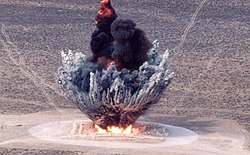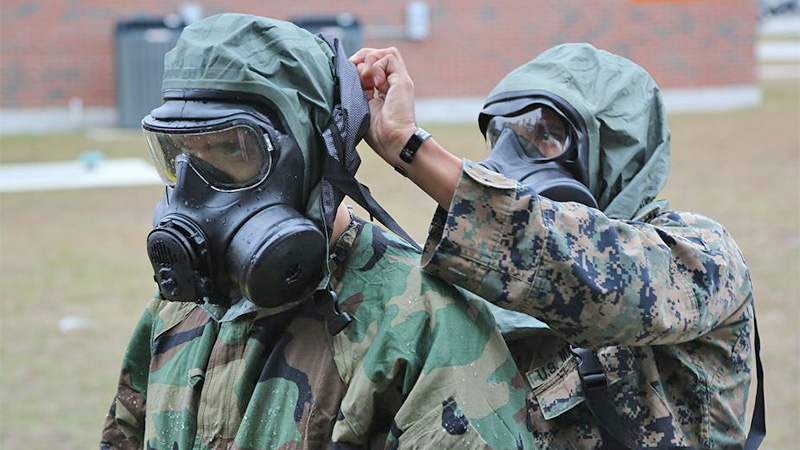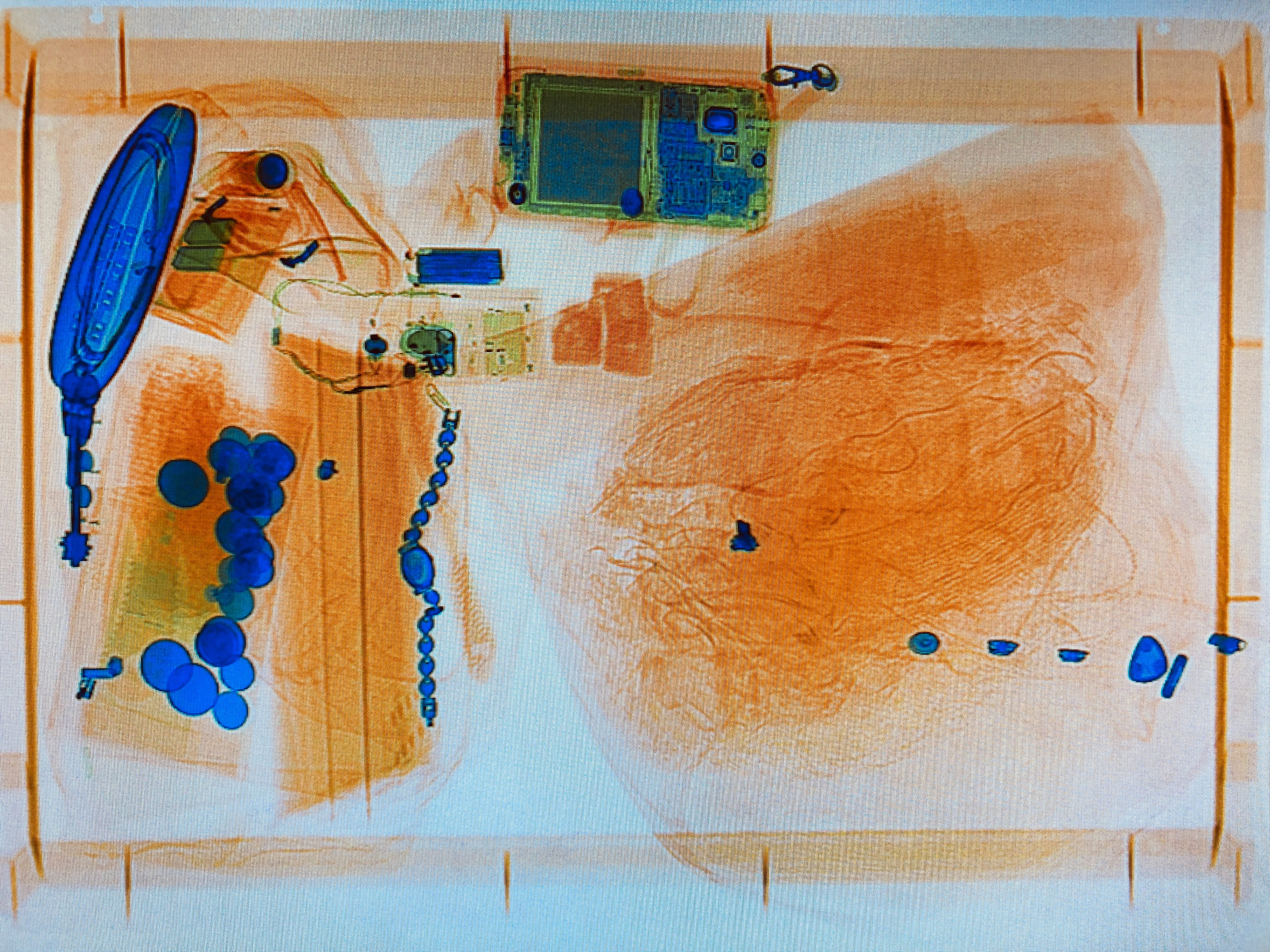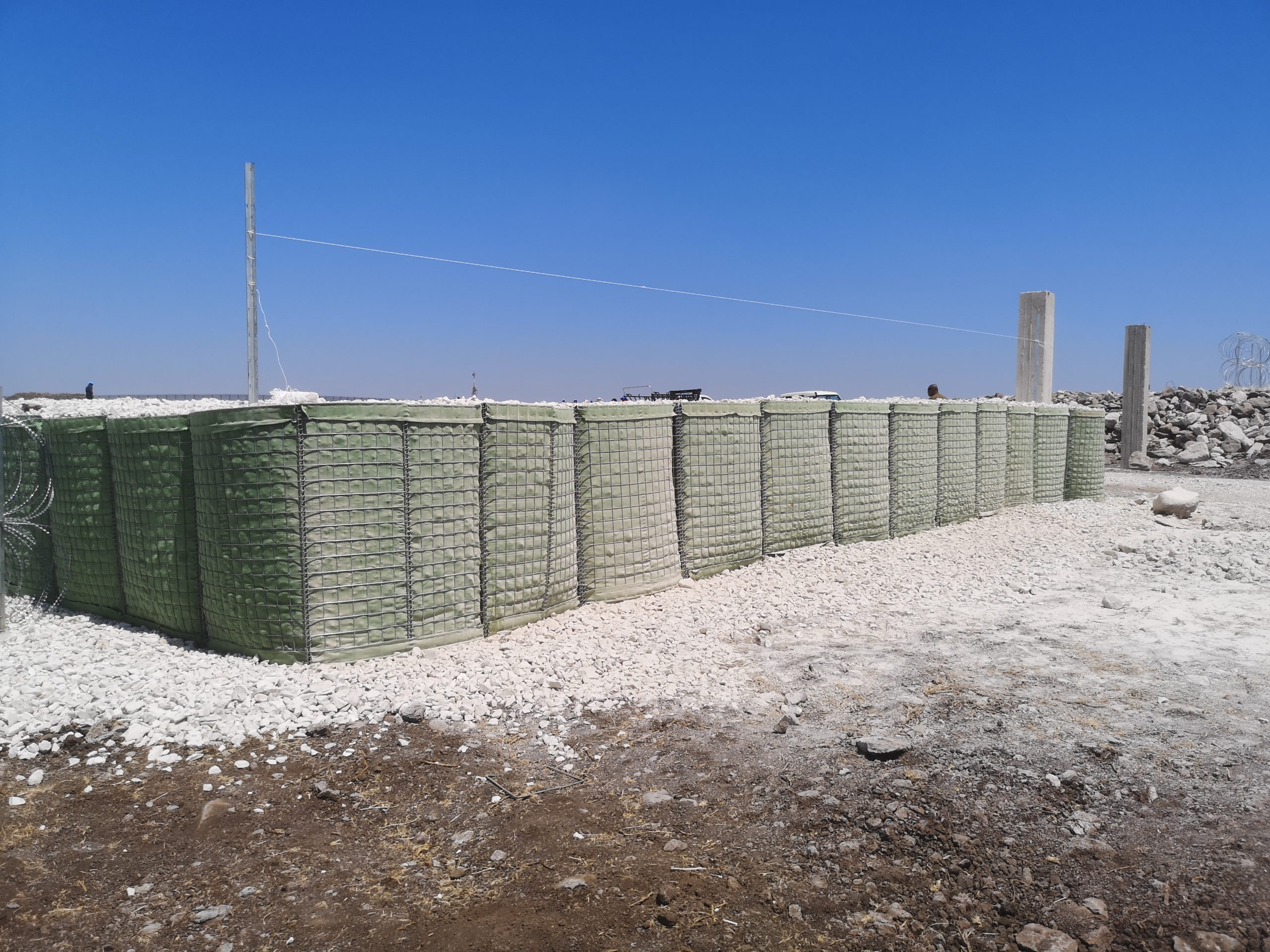
General Security Advisor
General Security Advisors will be required to demonstrate knowledge and skills of a wide range of security risk management.

A - Weapons Effects
Required to demonstrate ability to interpret, apply, and develop threat and risk assessments ranging from codes and standards, to weapons, weapons effects, and targets such as windows and vehicles.

B - Blast Effects
Required to have knowledge of the derivation of blast loading and effects of blast on various materials and elements and must possess an ability to analyze methodologies.

C - Electronic Security Systems
Required to possess an ability to design, select, implement and maintain electronic security systems, such as CCTV, Access Control, Intruder Detection Systems, etc.

D - CBRN
Required to demonstrate a comprehension of CBRN detection and the effects of CBRN materials, CBRN vulnerabilities, validation of threat information, risk assessment, and emergency response.

E - Hostile Vehicle Mitigation
Required to demonstrate an in-depth knowledge of vehicle impact testing to PAS 68 and IWA 14-1, and be able to deliver the analysis and design of a VSB scheme to detailed design stage, and develop drawings and specifications in accordance with PAS 69 / IWA14-2 and foundation setting out.

F - Protection Against Forced Entry
Required to demonstrate ability to a site security survey and assess topography, location, vulnerabilities, environmental conditions, site utilities and site-specific physical security issues.

G - Explosives and Weapons Search and Detection
Required to demonstrate a heightened level of experience and vision in delivering search and screening measures, as well as in balancing client priorities such as aesthetics and visitor experience.

H - Force Protection Engineering
Required to possess an awareness of weapons effects, in addition to an ability to take a user requirement document, and apply risk assessment techniques and provide suitable protection.

I - Digital Built Environment
Required to possess an understanding of all aspects of digital engineering relating to the built environment, and an understanding of the associated security implications and the interaction between physical, human and digital (‘cyber’) security.

J - Personnel Security (Insider Threat)
Required to demonstrate strengths personnel security risk assessment, insider threat monitoring and security culture, as well as applied knowledge from relevant sources such as regulators, security authorities, and academic institutions.

K - Personnel and People Security (Behavioural Detection and Disruptive Effects)
Required to illustrate a clear understanding of the threat posed by hostile actors, the activity and behaviors that they exhibit, and an understanding of holistic protective security and how vulnerabilities can be reduced.

L - Technical Surveillance Counter Measures
Required to demonstrate competence across a number of areas including performing strategic, tactical and operational level technical surveillance threat assessment utilising a range of approaches.

M - Counter Threats from UAS
Required to demonstrate to demonstrate strengths in knowledge and competencies associated with the threats posed by UAS and their potential effects, and the development of a mitigation strategy to protect against identified risks.

General Security Advisor
The functions of a General Security Advisor (GSA) are likely to include, from time to time; the assessment of the resilience of a facility (which may be a piece of infrastructure or a whole city) relative to the security risks which it faces; the identification of these risks (which may require some intelligence gathering); the reporting of this situation in a comprehensible form, to the relevant body; the identification of mitigation measures and the provision of these. This means that some tasks, probably at a higher level, will be undertaken by the GSA, but that other more detailed ones might be passed to a specialist. A GSA needs some general management capabilities in terms of liaison with stakeholders, programming, cost planning, reporting etc.
General Security Advisors are likely to have strengths in particular areas (some of which might be specialist competences) and should be knowledgeable in the process and application of measures for the protection of assets in the widest sense and are likely to have experience of most of the specialist competence areas. They should be able to provide technical information to specialists (and if necessary, write schedules of requirements for specialist work) and also be able to communicate clearly with non-specialists.
On larger scale projects the GSA is likely to be the lead security consultant on the project responsible for managing and coordinating the other specialist security disciplines.
This category exists at Ordinary Member and Principal Member grades only.
For more information on the competency requirements for General Security Advisor please consult the RSES Guidance Document

Category A
Protection Against the Effects of Weapons
Candidates for RSES Accreditation in the field of Protection Against the Effects of Weapons will need to be able to demonstrate strengths in (at least) the following areas; a knowledge of small arms, military weapons systems, improvised weapons (including improvised explosive devices of various sorts, e.g. rockets and mortars), knives and blunt instruments. This category specifically requires candidates to be able to show a practical understanding of the use of weapons including the properties of different variants and the ability (at Ordinary Member and Principal Member grades) to calculate range, velocity, trajectory, etc. It also includes an understanding of the factors involved in assessing different possible firing points/baseplate locations, etc.
Candidates are expected to show applied knowledge (qualitative and quantitative) of the effects of these weapons (impact damage, penetration, perforation, detonation, air shock, ground shock, hydraulic shock, heat, ricochets etc.) They are also expected to understand how target materials can be introduced or upgraded to mitigate these effects on building materials, infrastructure, solid/rocks, water, vehicles, aircraft, ships, trains etc. They will also appreciate when weapons effects can be credibly calculated and when testing is necessary. They will have knowledge of appropriate test standards.
This category is available at all three grades. At Technician Member grade, candidates will have knowledge and experience of carrying out tasks such as blast and/or ballistic testing. Candidates at Ordinary Member grade should, in a holistic security context, be able to apply knowledge of weapons characteristics, test data, etc. to devise suitable mitigation measures, and specify recognised testing as necessary. At Principal Member grade, this knowledge and experience will be more extensive and will enable the candidate to characterise new weapons, develop new materials or mitigation measures and devise suitable new test procedures and standards.
For more information on the competency requirements for Category A please consult the RSES Guidance Document

Category B
Protection Against the Effects of Blast
Security engineers specialising in blast effects and analysis are likely to have strengths in particular areas, e.g. the derivation of blast loading and the effects of the blast on various materials/elements. They should be knowledgeable about the process and application of blast protection measures for the protection of assets. They should be able to provide technical information to specialists and also be able to communicate clearly with non-specialists.
Candidates specialising in blast effects should particularly: Have a detailed knowledge of blast loading; Have experience of the response of a range of structural elements to blast; Be able to undertake dynamic analysis ; be able to specify blast mitigation measures and assess the cost/benefits from possible mitigation measures and provide specification information, so that contractors/subcontractors can install detailed mitigation measures
For more information on the competency requirements for Category B please consult the RSES Guidance Document

Category C
Electronic Security Systems
This category covers candidates who are practising in the design, selection, implementation and maintenance of electronic security systems. Typically, such systems would include (but are not limited to); Closed Circuit Television, electronic access control, perimeter and intruder detection systems. Furthermore, this category includes software and hardware platforms that integrate electronic security systems, i.e. video management and physical security integration systems.
Candidates for this category should have the ability to interpret, apply and develop electronic security systems mitigation measures using threat and risk assessments and/or Strategic Security Masterplans. They should also be able to develop a client’s brief and work within a defined scope of deliverables and apply a security mindedness approach i.e. PAS 1192-5 to the use and information sharing of digital design tools, manufacture, installation and operation cycles.
For more information on the competency requirements for Category C please consult the RSES Guidance Document

Category D
CBRN
CBRN candidates, although drawn potentially from diverse technical backgrounds (e.g. science, security engineering, general security advisor, etc), are expected to have knowledge, understanding, and experience of the effects of CBRN materials on people and the urban environment; how to identify CBRN vulnerabilities in the urban environment; sources of accurate CBRN threat information; how to undertake a CBRN risk assessment that will inform the development of mitigation solutions and response strategies; how conventional security measures, including mail-screening, can be optimised to reduce CBRN-specific vulnerabilities; the basic principles of relevant CBRN protection technologies (e.g. filtration).
Candidates need to understand the effectiveness against the different classes of CBRN materials; the basic principles of CBRN detection technologies (including their limitations) and their potential application to both security screening and to inform protection/mitigation strategies; and the basic principles of CBRN emergency response procedures, including those provided by the emergency services.
For more information on the competency requirements for Category D please consult the RSES Guidance Document

Category E
Hostile Vehicle Mitigation
Hostile Vehicle Mitigation (HVM) is a protective security discipline focussing on reducing risks associated with vehicle borne threats posed by terrorists and criminals.
HVM is the delivery of measures that are informed by the: threat and how it manifests itself,
vulnerability of a given location and, multiple consequences of an attack and, needs of the enterprise or area requiring protection.
The basis of HVM is security threat and risk assessments, security planning, and the design and the deployment of risk-based operational and physical measures, including traffic management, traffic calming and protective security solutions such as vehicle security barriers.
HVM, due to the nature of the measures being deployed (including, but not exclusively, Vehicle Security Barriers) is a specialism that incorporates expertise in project management, security engineering, highway and traffic management, architectural and urban realm design, and a detailed understanding of dynamic vehicle impact testing of barriers.
For more information on the competency requirements for Category E please consult the RSES Guidance Document

Category F
Protection Against Forced Entry
Candidates for registration in the field of Protection against Forced Entry will need to be able to demonstrate that they can undertake a site security survey and assess topography, location, vulnerabilities, environmental conditions, site utilities and site specific physical security issues. They should be able to assess construction materials used to form walls, floors and roofs, glazing and framing assessment, door locks and materials. Candidates will be able to take an operational requirement (OR) document and provide a suitable level of physical protection using fences and building fabric. This protection might be for resistance to both criminal and terrorist attack and be specified cognisant of the type and time of response.
Candidates will have knowledge and experience of a range of attack methodologies, as defined by both publicly available and government test standards, and appropriate applicability of the standards, to the project needs and that of specific materials, i.e. doors, windows, walls, hatches, barsets and grills (including their locking systems). Candidates will be able to demonstrate an understanding of how to specify intrusion detection systems to ensure detection occurs at the earliest opportunity.
Candidates at Ordinary Member grade should be able to demonstrate, by knowledge and experience, that they are able to specify/provide solutions that mitigate the designated risks, by strengthening the building fabric, creating multiple approved security layers (walls, portals, floors, locks) between the perimeter and the protected assets. At Principal Member grade, this knowledge and experience will be more extensive and will enable candidates to adapt or develop new materials/mitigation measures and deal with new attack weapons or changing threat scenarios. At this grade, candidates will also be able to engage other security specialists in technical discussions and advise senior non-technical personnel on complex technical issues.
Candidates for registration in the field of Protection against Forced Entry will need to be able to demonstrate that they can undertake a site security survey and assess topography, location, vulnerabilities, environmental conditions, site utilities and site specific physical security issues. They should be able to assess construction materials used to form walls, floors and roofs, glazing and framing assessment, door locks and materials. Candidates will be able to take an operational requirement (OR) document and provide a suitable level of physical protection using fences and building fabric. This protection might be for resistance to both criminal and terrorist attack and be specified cognisant of the type and time of response.
Candidates will have knowledge and experience of a range of attack methodologies, as defined by both publicly available and government test standards, and appropriate applicability of the standards, to the project needs and that of specific materials, i.e. doors, windows, walls, hatches, barsets and grills (including their locking systems). Candidates will be able to demonstrate an understanding of how to specify intrusion detection systems to ensure detection occurs at the earliest opportunity.
Candidates at Ordinary Member grade should be able to demonstrate, by knowledge and experience, that they are able to specify/provide solutions that mitigate the designated risks, by strengthening the building fabric, creating multiple approved security layers (walls, portals, floors, locks) between the perimeter and the protected assets. At Principal Member grade, this knowledge and experience will be more extensive and will enable candidates to adapt or develop new materials/mitigation measures and deal with new attack weapons or changing threat scenarios. At this grade, candidates will also be able to engage other security specialists in technical discussions and advise senior non-technical personnel on complex technical issues.
For more information on the competency requirements for Category F please consult the RSES Guidance Document

Category G
Explosives and Weapons Search and Detection
This category relates to search and screening of people, their possessions, vehicles, deliveries and mail entering (and/or leaving) buildings and sites (with secure perimeters) for the presence of explosives and weapons (and other threat items as may be required); also included is searching buildings and areas. Candidates for registration in this category must demonstrate experience and vision in delivering search and screening measures, and balancing effectiveness and efficiency, while addressing other client priorities such as aesthetics and visitor experience.
In common with other aspects of security, specifying and delivering appropriate and effective search and screening measures involves far more than just choice of equipment. Robust application of an operational requirements methodology (including understanding the threat and assessing risks) is essential to understanding the needs and constraints of the client organisation/site – for both current and potential future needs. This will, in turn, enable appropriate search and screening measures to be identified, specified, procured and delivered, and done so in a way that complements other security measures.
Key considerations typically include understanding detection priorities and throughput requirements; choice of technologies and techniques; development of policies, procedures and processes; available space, how it can best be used, and supporting infrastructure requirements; and ensuring staff are suitably trained, motivated and supervised.
This category is available at all three grades.
For more information on the competency requirements for Category G please consult the RSES Guidance Document

Category H
Force Protection Engineering
Force Protection Engineering (FPE) is a term often used in a military environment and is the combination of engineering activities whose primary intended effect is to minimise the risks to personnel and assets posed by the occupational and environmental hazards they may face. FPE provides both a physical and cognitive effect in terms of protecting people and assets as well as morale.
Force Protection (FP) in the wider sense refers to the measures and means to minimise the vulnerability of personnel, facilities and equipment to any threat and in all situations in order to preserve the freedom of action and the operational effectiveness of a military force. Both FP and FPE requires a fundamental understanding and application of risk, threat and vulnerability and their application in disaster response, business continuity, consequence planning and the implementation of protective measures.
FPE is the application of engineering skills to identify critical infrastructure in the context which they are needed; this in turn is applied against various scenarios such as to adapt and modify existing, expeditionary structures, materials to provide protective mitigation measures to deal with the threat from weapons or from a change in the threat scenario.
Experience and an understanding of the effects of weapon systems including small arms, indirect fire weapons, explosive devices and CBRN on people, materials and structures is essential as this understanding helps to steer the appropriate and proportionate engineering response.
For more information on the competency requirements for Category H please consult the RSES Guidance Document

Category I
Digital Built Environment
Force Protection Engineering (FPE) is a term often used in a military environment and is the combination of engineering activities whose primary intended effect is to minimise the risks to personnel and assets posed by the occupational and environmental hazards they may face. FPE provides both a physical and cognitive effect in terms of protecting people and assets as well as morale.
Force Protection (FP) in the wider sense refers to the measures and means to minimise the vulnerability of personnel, facilities and equipment to any threat and in all situations in order to preserve the freedom of action and the operational effectiveness of a military force. Both FP and FPE requires a fundamental understanding and application of risk, threat and vulnerability and their application in disaster response, business continuity, consequence planning and the implementation of protective measures.
FPE is the application of engineering skills to identify critical infrastructure in the context which they are needed; this in turn is applied against various scenarios such as to adapt and modify existing, expeditionary structures, materials to provide protective mitigation measures to deal with the threat from weapons or from a change in the threat scenario.
Experience and an understanding of the effects of weapon systems including small arms, indirect fire weapons, explosive devices and CBRN on people, materials and structures is essential as this understanding helps to steer the appropriate and proportionate engineering response.
For more information on the competency requirements for Category I please consult the RSES Guidance Document

Category J
Personnel Security (Insider Threat)
Candidates for registration in the field of Personnel Security (Insider Threat) will need to be able to demonstrate strengths in particular areas, e.g., personnel security risk assessment, insider threat monitoring and security culture. This specialist category specifically requires candidates to be able to show practical understanding of holistic protective security and of how insider risk, at both strategic and operational levels, can be reduced through targeted integration of personnel, physical and cyber security measures.
Candidates are expected to show applied knowledge from relevant sources i.e. regulators (e.g. the Information Commissioner’s Office (ICO)), security authorities (e.g. CPNI), professional institutes (e.g. CIPD) and academic institutions.
At Principal level, candidates will be able to show relevant experience in helping senior leadership teams recognise and understand their organisation’s specific vulnerabilities to insider threat; recommend an action plan which may form a programme which helps the organisation reduce its strategic exposure to high risk behaviours from its people; and experience in helping organisations apply those measures as part of a programme of strategic improvement and risk reduction.
At Ordinary Member grade, candidates will be able to show relevant experience in helping organisations recognise their specific vulnerabilities to insider threat; identify the broad elements in an action plan to reduce their strategic exposure to high risk behaviours from insiders; and experience in helping organisations apply those measures as part of an holistic programme.
Candidates need to demonstrate the application of their specialist knowledge and professional expertise in Personnel Security (Insider Threat) as set out below and through their specialist qualifications. Candidates are not required to demonstrate engineering, scientific or technical competences, commercial ability, or knowledge in sustainable development and health, safety and welfare.
For more information on the competency requirements for Category J please consult the RSES Guidance Document

Category K
Personnel and People Security (Behavioural Detection and Disruptive Effects)
Show understanding of the threat posed by malign/hostile actors, the activities and behaviours that they may exhibit to plan and conduct their operations, and the effects-based mechanisms available to disrupt them; to deny their ability to operate, to detect them, and, through advertising these two capabilities, deter them from conducting hostile acts.
Show understanding of holistic protective security and how vulnerabilities can be reduced via integrated personnel, physical and cyber security measures and effective communication of these.
For more information on the competency requirements for Category K please consult the RSES Guidance Document

Category L
Technical Surveillance Counter Measures
The Technical Surveillance Countermeasures Measures (TSCM) category covers the wide scope of the discipline, including inspections, investigations, analysis, and countermeasures research, design and implementation.
Candidates will be required to demonstrate competence across a number of areas including performing strategic, tactical and operational level technical surveillance threat assessment utilising a range of approaches; asset focus, threat actor focus, systems focus, etc. Candidates will be required to be able to analyse situational security needs and effectively risk manage the technical surveillance threat to assets. Apply a robust knowledge of theoretical approaches to technical surveillance and countermeasures, and effectively apply these to real world situations.
They will need to communicate complicated technical information across a variety of mediums to both specialist and non-specialist professionals and use situation suitable methodologies to perform physical inspections They will use specialised technical and scientific equipment and interpret outputs to perform technical inspections and utilise effective analysis to investigate anomalous inspection discoveries, draw conclusions, and make recommendations to reduce technical surveillance risk. They will be able to assess new technologies from defensive and offensive perspective for their impact on technical security and design and implement permanent countermeasures solutions, assure construction projects and adapt countermeasure needs through the project lifecycle.
Candidates will be able to work within compliance of relevant UK or local legislation. The depth of knowledge and experience required across these areas will depend upon the level being applied for; with Technician members requiring fundamental knowledge of the discipline, Ordinary members a baseline across all areas and in depth experience in several, and Principal members requiring greater depth and leadership across all the areas.
Candidates are expected to demonstrate knowledge and experience of the criteria above, and to display an ability to envision and adapt practice to changing technologies and environments. The TSCM category is available at Technician, Ordinary, and Principal levels. Whilst not essential, a suitable academic qualification in a discipline of relevance to TSCM is favourable at the Ordinary and Principal grades.
For more information on the competency requirements for Category L please consult the RSES Guidance Document

Category M
Count Threats from UAS
Candidates need the ability to interpret, apply and develop appropriate and proportionate C-UAS protective mitigation strategies and associated plans using threat and threat and risk assessments as well as the ability to develop threat informed, practical and proportionate Level 1 and Level 2 Operational Requirements UAS threats and their effects
Candidates need to be able to identify and assess the threats posed by UAS and the ability to conduct a threat informed site specific UAS vulnerability assessment, be able to assess the potential effects posed by UAS threats as well as develop mitigation strategies reducing reckless/negligent use and deterring hostiles.
Candidates need to be able to determine and identify appropriate and proportionate mitigation techniques for reducing reckless and/or negligent use ; to determine and identify appropriate and proportionate mitigation techniques for deterring hostile actors and against the insider threat.
Candidates should be able to analyse commercially available detect, track and identify (DTI) equipment, including its capabilities and limitations. This should include, but not be limited to the following type of technology: Radio frequency; Radar; Electro optical / infra-red and Acoustic. Candidates need to be able to analyse commercially available effector technology, including its capabilities and limitations. This should include, but not be limited to the following types of technology: Kinetic effectors (guns and missiles); Directed energy weapons; Electronic effector systems (jammers and spoofers); Net guns and Birds of prey.
For more information on the competency requirements for Category M please consult the RSES Guidance Document
